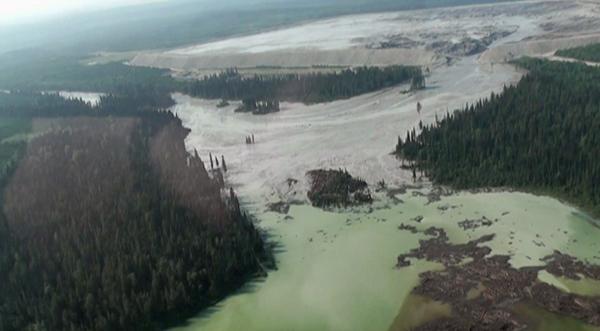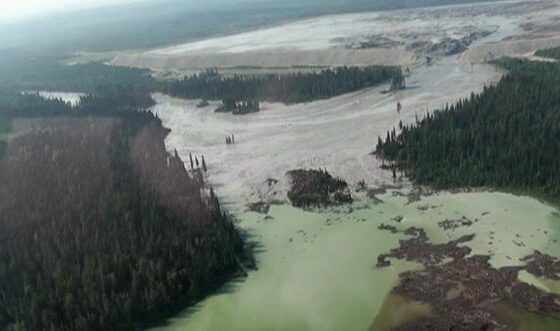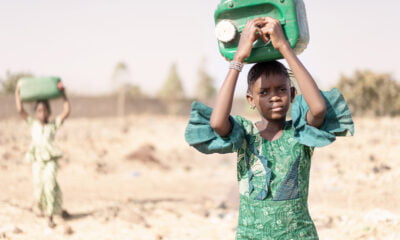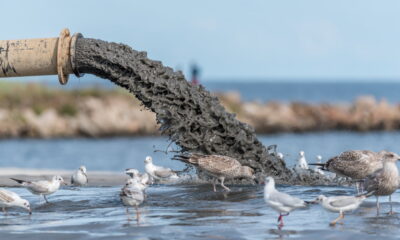

Energy
Canada faces environmental disaster as 1.3 billion gallons of mining waste flows into rivers
Citizens of British Columbia awoke to the thunderous noise of over a billion gallons of mining waste water cascading through Hazeltine Creek earlier this week, polluting the state’s fresh water supply.
According to officials, the open-pit Mount Polley copper and gold mine may have suffered a breach in a tailings pond, which released the mine’s huge reservoir of waste water into numerous water supplies and fisheries. No official reason for the disaster has yet been given.
The breach has affected Quesnel Lake, Polley Lake, Hazeltine Creek and Cariboo Creek. Latest reports now also suggest the entire Quesnel and Cariboo river systems are polluted, right up to the salmon-bearing Fraser River.
Authorities have issued a water ban, which has currently affected 300 people. The area surrounding the mine is sparsely populated, but fears are mounting that the intricate river systems will carry the mining waste further into more densely populated areas.
The mining waste may contain chemicals and debris such as arsenic, mercury, sulphur and uprooted trees and rocks.
Al Richmond, chairman of the Cariboo Regional District, told to the Vancouver Sun, “What we know so far is that debris from the tailings pond backed up a little into Polley Lake, which absorbed some of the flow, but the majority of it went down into the Hazeltine Creek.
“The creek (used to be) four feet wide. Now it’s 150 feet wide.”
Imperial Metals, who own Mount Polley mine, has accepted full responsibility for the disaster. President Brian Kynoch, in a news conference earlier this week, said, “I apologise for what happened.
“If you asked me two weeks ago if this could have happened, I would have said it couldn’t.”
The company is yet to confirm why the disaster was caused, and has suspended mining activities while it is conducting a full investigation.
Kynoch has also said that it will not take long for the water to be processed back into drinking water, as “It’s very close to drinking water quality (already), the water in our tailings.
“There’s almost everything in it but at low levels…. No mercury, very low arsenic and very low other metals.”
According to Canada’s Ministry of Environment, the mine has been repeatedly warned about tailing pond levels prior to the breach this week, with five warnings alone in May.
Photo source: The Tyee via Twitter
Take our 2014 reader survey and you could win an iPad, Kindle or donation to a charity of your choice.
Further Reading:
Water scarcity and steep energy costs ‘biggest risk’ to mining industry
Canadian tar sands oil pipeline is approved, despite protests
Australia approves $16m Carmichael coal mine despite environmental concerns
Is it right to invest in an FFFF (Fossil Fuel Free Fund)?
A world without water: Financial Times counts the cost of water scarcity































